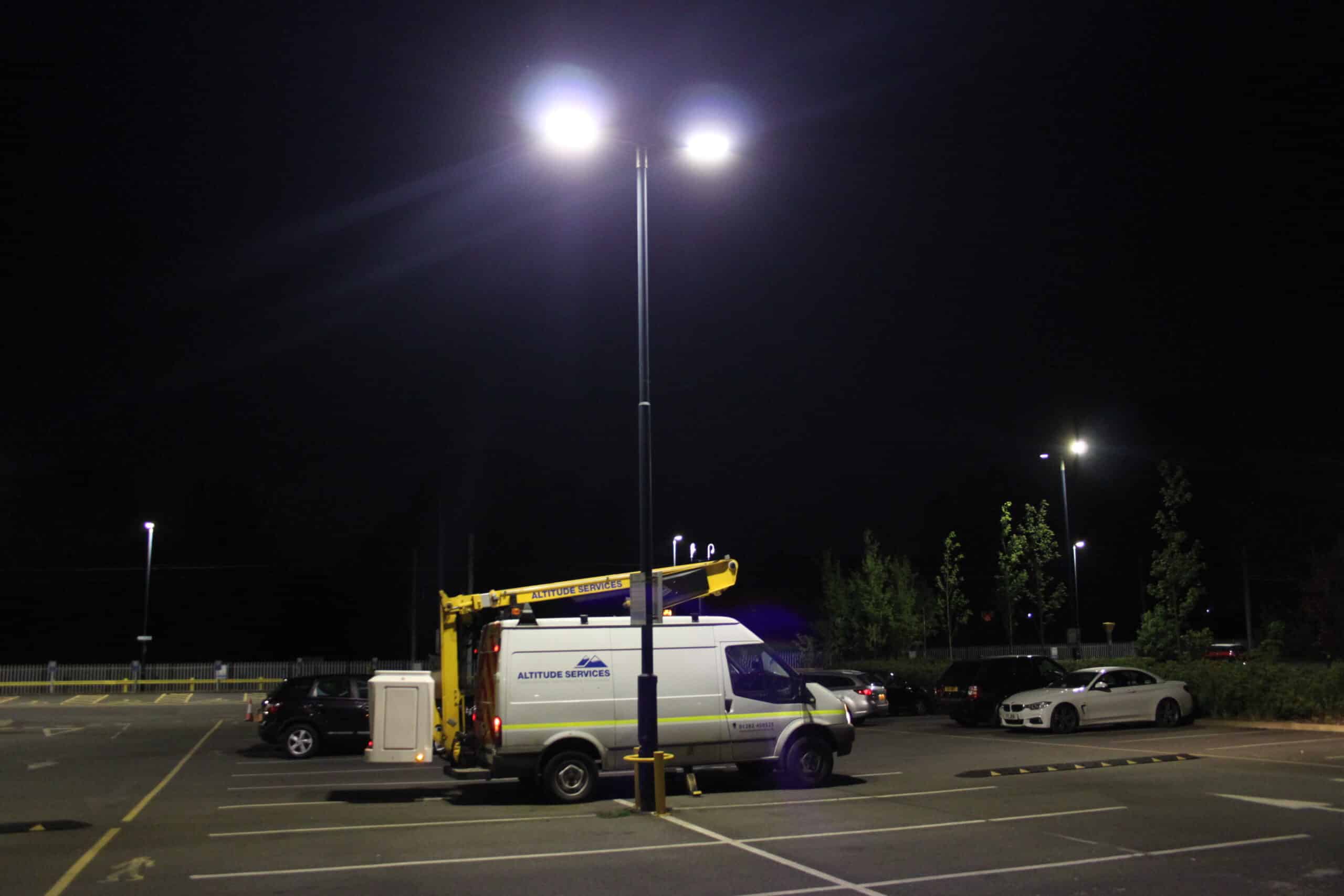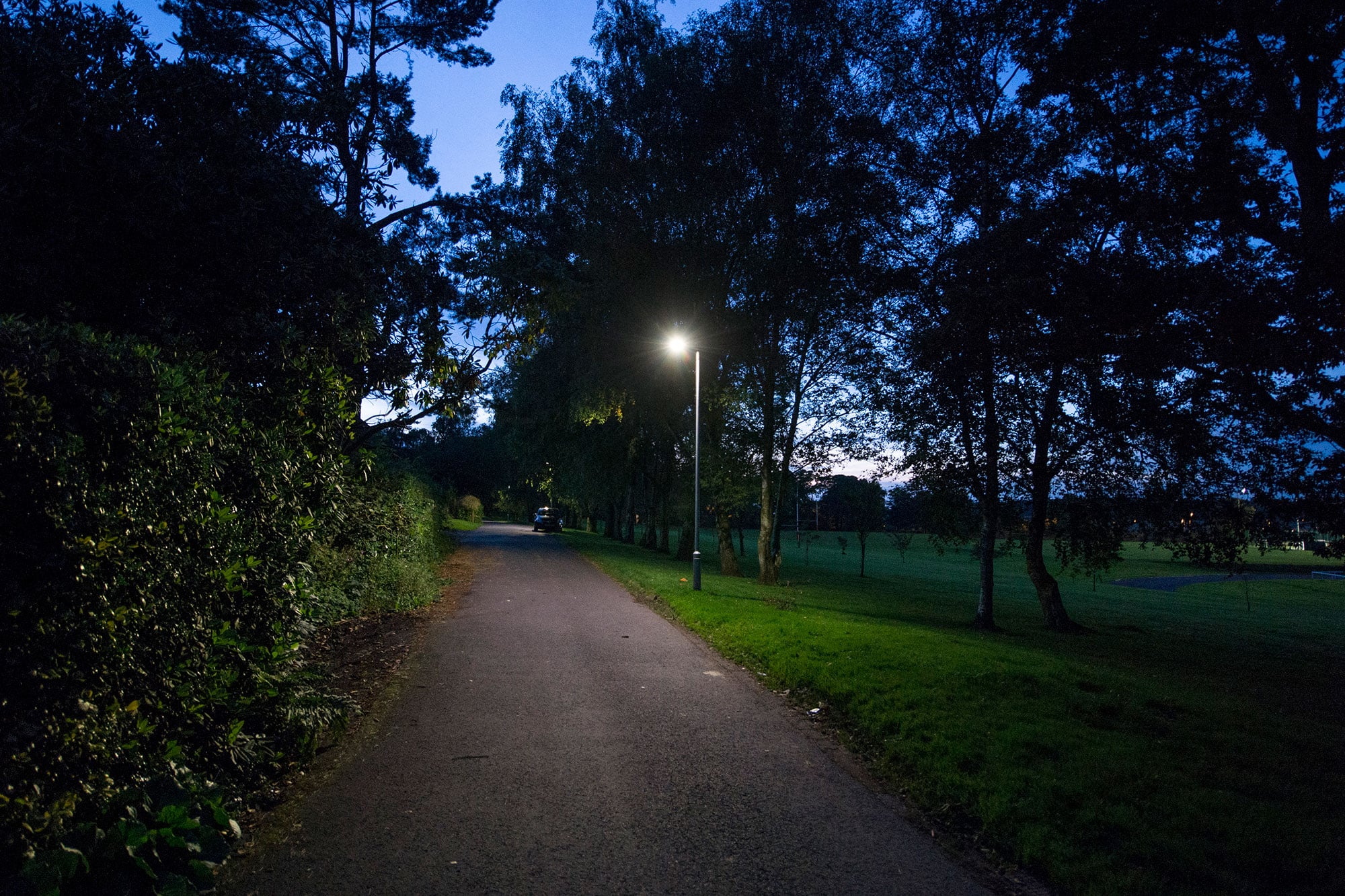Just as we all age, so do traffic signs. They are subject to wear and tear and, being outdoors, they are constantly exposed to the elements.
There can be obvious physical signs of deterioration, but they can also become less effective because they are no longer as retroreflective.
What is retroreflectivity?
It is the ability of a surface to return light to its source.
For road and traffic signs, it enables them to be more easily read at night time or in conditions where light is poor.
Over time, the retroreflectivity of traffic signage starts to degrade, which is why inspection, testing and maintenance are crucial.
Consequently, Altitude Services provides a detailed, diligent retroreflectivity testing service
Principle and Practice
Retroreflection is an optical phenomenon. It occurs when a light beam hits a surface and the surface returns a large portion of the light beam back to where it came from.
How bright a retroreflective object is depends on how intense the light is that is striking it, and on what materials the object is made of.
A retroreflector surface achieves its effect through multiple reflections. Typically, these are made up of cube corners or glass or plastic microspheres.
Two of the most important aspects of road safety are road signs and markings, both of which use retroreflectivity. They are visible at night and low light conditions because they take the light from drivers’ headlights and reflect back to the driver through the retroreflectors embedded in the signs or markings.
Retroreflective materials used on road signs will appear brightest to the person observing them who is closest to the light source – the motorist.
What Determines Traffic Sign Visibility?
There are various factors which determine how visible signs and markings are. Luminance is the total amount of light a driver will receive from a sign or marking. Contrast is the ratio between this light and the light from the surroundings, as marked by the driver’s position.
Other considerations are to do with how conspicuous the traffic signs are, and their colour.
Retroreflectivity is the measure of how efficient signage is. Once this quality begins to diminish, signs will become less effective in poorer lighting conditions, or at night.
Inadequate signs that are poorly maintained can be significant contributors to night time road accidents.
Therefore, it is crucial to test for retroreflectivity regularly, and to inspect traffic signage for signs of deterioration.
How We Test for Retroreflectivity
The recommended time period for testing for retroreflectivity is 10 years after initial installation then every two years after that.
To do this we use retroreflectometers and bespoke data-collecting software.
Here, at each sign we visit, we are measuring the coefficient of retroreflectivity. Essentially, this determines how much light the fixed area of each sign is returning to its source.
Alongside this, we look for any obvious, outward signs of deterioration. It’s important to note that a traffic sign’s effectiveness is not just down to how it looks, but how it performs.
Where signs fail to meet minimum standards of retroreflectivity, there is the potential for there to be an impact on road safety.
It is therefore crucial that local authorities and any other agencies responsible for traffic signs inspect and test them regularly.
Can You Be Sure Your Road Signs are Safe?
Having a proper and thorough inspection and testing schedule in place will help ensure your traffic signage is in good working order, and that it meets retroreflectivity standards.
Contact Altitude Services to find out more.
Enjoying our articles? Get them straight to your inbox. All you need to do is sign up to our newsletter here: Sign me up!


